David Kohan Marzagão
The Influence of Memory in Multi-Agent Consensus
May 10, 2021
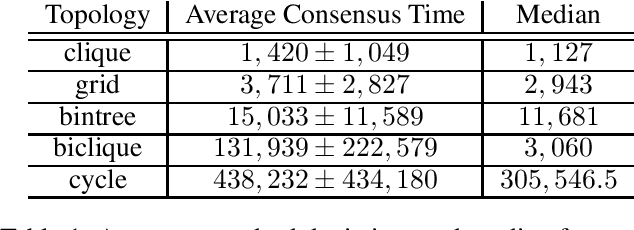
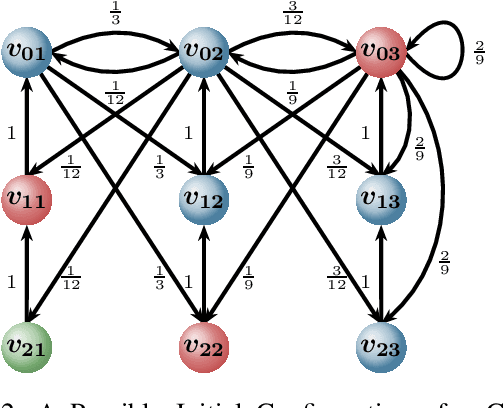
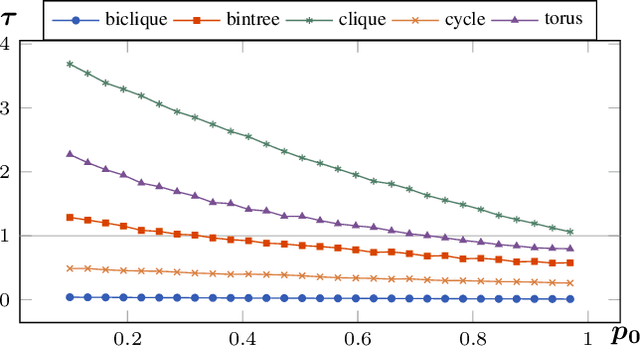
Abstract:Multi-agent consensus problems can often be seen as a sequence of autonomous and independent local choices between a finite set of decision options, with each local choice undertaken simultaneously, and with a shared goal of achieving a global consensus state. Being able to estimate probabilities for the different outcomes and to predict how long it takes for a consensus to be formed, if ever, are core issues for such protocols. Little attention has been given to protocols in which agents can remember past or outdated states. In this paper, we propose a framework to study what we call \emph{memory consensus protocol}. We show that the employment of memory allows such processes to always converge, as well as, in some scenarios, such as cycles, converge faster. We provide a theoretical analysis of the probability of each option eventually winning such processes based on the initial opinions expressed by agents. Further, we perform experiments to investigate network topologies in which agents benefit from memory on the expected time needed for consensus.
Provenance Graph Kernel
Oct 20, 2020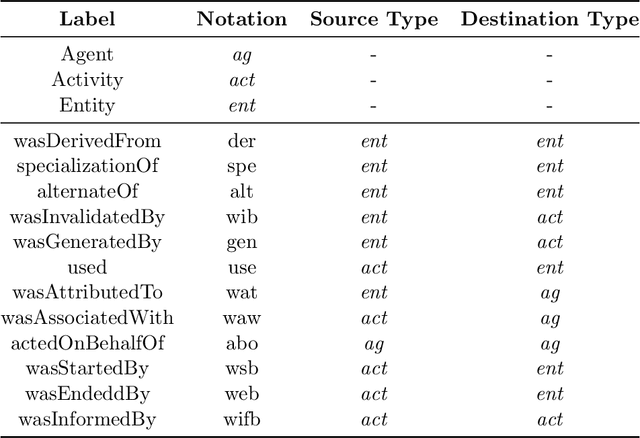
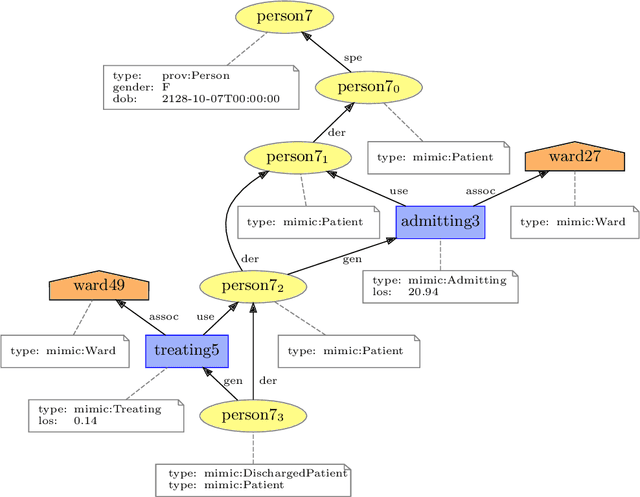
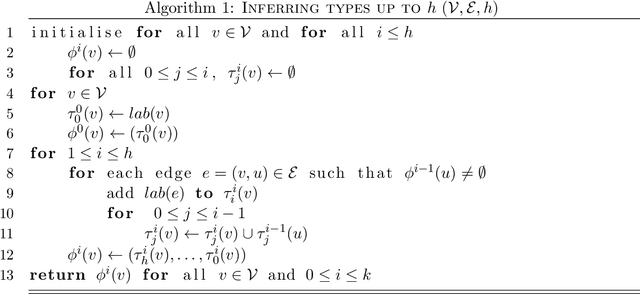
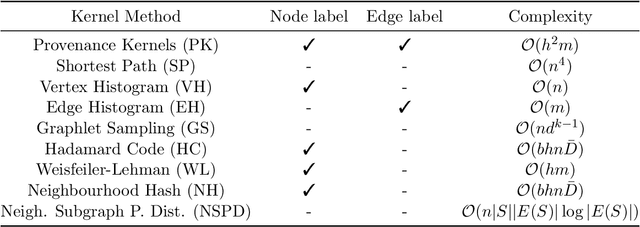
Abstract:Provenance is a record that describes how entities, activities, and agents have influenced a piece of data. Such provenance information is commonly represented in graphs with relevant labels on both their nodes and edges. With the growing adoption of provenance in a wide range of application domains, increasingly, users are confronted with an abundance of graph data, which may prove challenging to analyse. Graph kernels, on the other hand, have been consistently and successfully used to efficiently classify graphs. In this paper, we introduce a novel graph kernel called \emph{provenance kernel}, which is inspired by and tailored for provenance data. It decomposes a provenance graph into tree-patterns rooted at a given node and considers the labels of edges and nodes up to a certain distance from the root. We employ provenance kernels to classify provenance graphs from three application domains. Our evaluation shows that they perform well in terms of classification accuracy and yield competitive results when compared against standard graph kernel methods and the provenance network analytics method while taking significantly less time.Moreover, we illustrate how the provenance types used in provenance kernels help improve the explainability of predictive models.
 Add to Chrome
Add to Chrome Add to Firefox
Add to Firefox Add to Edge
Add to Edge